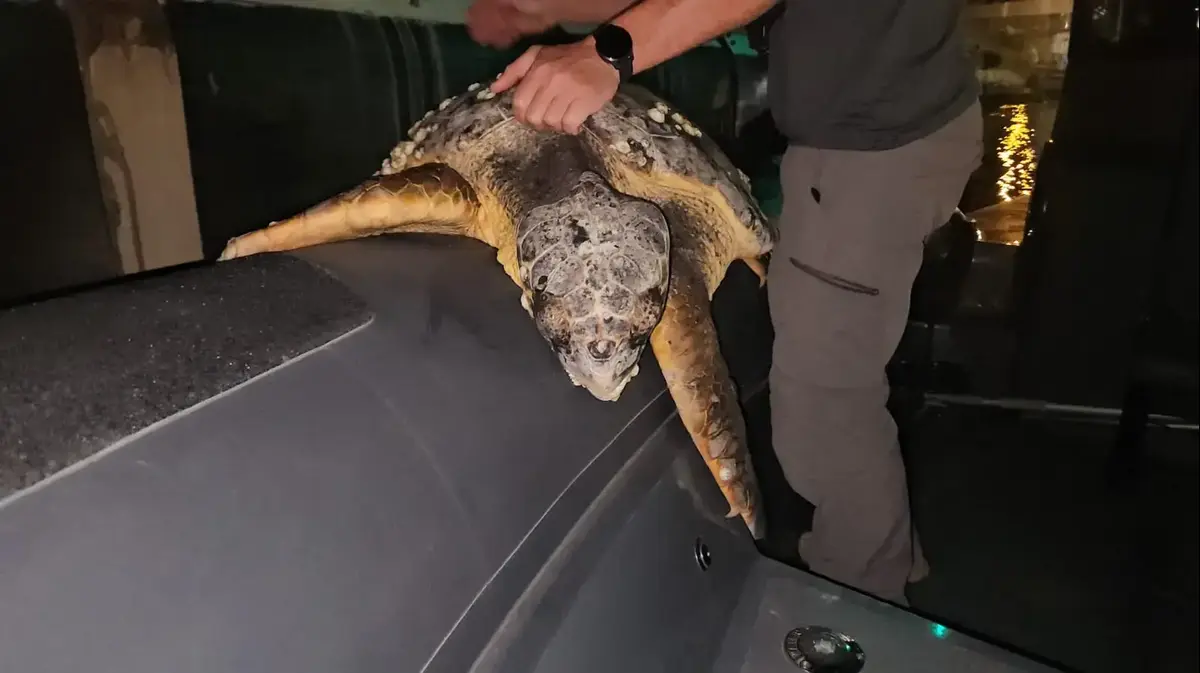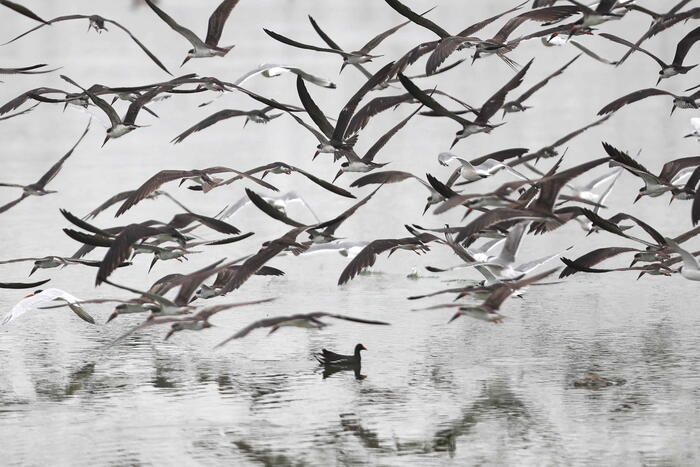'Sea Unicorns' and Carnivorous Sponges: 7 'Incredible' Animals That Really Exist
Created: 07/10/2022, 16:45
By: Franziska Vystrcil
Nature didn't just create cute or impressive creatures.
Some animals could also come from another planet based on their appearance.
These seven are particularly impressive.
Stuttgart - How many animal species there are actually in the world cannot be answered even in 2022.
Scientists assume that most of the creatures that populate our planet have still not been discovered.
The reason: many species live in areas that are difficult for humans to reach.
Just this year, researchers discovered a new form of life beneath the Antarctic ice shelf.
Especially in the deep sea one or the other curious creature lurks: Transparent bodies, oversized eyes or vampire teeth - many of the animals look too strange to really be true.
"Didn't know that there were such strange animals in the world," writes a user of a YouTube video about the bizarre-looking animals.
But they do exist, and not only in the depths of the oceans.
These are seven strange representatives.
1. Narwhals, the swimming unicorns
Suddenly the horn pushes out of the water, towering far above the water surface.
Narwhals have tusks that spiral through their upper lip and can grow up to three meters long and weigh eight to ten kilograms.
At first glance, this tooth looks very much like a horn.
Because it also appears to be protruding from the whale's head, it's not without reason that narwhals are called the "unicorns of the sea," reports
National Geographic
.
You rarely see the shy Arctic dweller.
It is mainly found in the waters off the Canadian and Greenland coasts.
Narwhals are also known as the “unicorns of the sea” because of their tooth, which sticks out of their upper lip like a horn.
© Rights Managed via www.imago-images.de
Science has long puzzled over the meaning and purpose of the horn, which is actually a tooth.
As researchers only found out last year, the whales use their tooth for hunting.
They smack their prey with a short, jagged motion to make it easier to catch.
However, researchers continue to suspect that the narwhals also use the tooth for orientation.
However, this is not proven.
Like the unicorn, the narwhal will likely remain a mystery.
Meanwhile, many believe that a prehistoric basking shark is still swimming through the seas out there.
Rumors persist that the megalodon actually still exists.
2. Carnivorous armored animal: the lipped turtle
The fringed tortoise is also a curious sight.
You have to travel far to see them.
The armored animal has its natural habitat in South America, more precisely in the Amazon.
But you can also see the “flat” turtle in some zoos.
The tortoises are perfectly camouflaged by their coloring.
The shell is often overgrown with algae, which protects them even better from the eyes of predators.
also read
Family feeds stray cat - she takes her to her babies
Why lawn clippings don't get to rabbits and the like
The carnivorous fringed turtle is found in the Amazon.
© imago stock&people
It is not just their appearance that makes the fringed tortoise a curious creature, there is also one peculiarity that is special: unlike most of its species, the fringed tortoise cannot pull its head back into its shell.
Instead, she tucks her neck under the carapace in an S-shape.
With its hunting technique, the tortoise also stands out from its fellows.
The carnivorous turtle lays in wait in deeper waters at dusk.
If a fish swims by, it opens its mouth in a flash.
This creates a suction that sucks the prey directly into the mouth.
The hatching of a close relative of the fringed tortoise was similarly curious: a tortoise with two heads and six legs hatched in the USA.
3. Half deer, half pig: the deer boar
The Sulawesi deer boar could pass as a mythical creature.
With a pig's snout and teeth sticking out of his face like antlers, you'd think he was a cross between a deer and a pig.
But this animal actually exists.
Its natural range is limited to the island of Sulawesi and some offshore islands.
A mix of deer and pig?
No, babirusas belong to the pig family.
© imago stock&people
In addition to the two canines on the lower jaw, male Sulawesi deer boars have two other teeth that grow right through the trunk cover - which in turn makes it look like antlers of some kind.
Researchers have not yet found out what the animals need such large teeth for.
4. The panda ant, which is actually a wasp
It is neither a panda nor an ant - and yet it bears the name "panda ant".
In fact, the insect is a species of wasp found in Chile and Argentina.
The female panda ant does not have wings, making it look more like an ant.
She also has some kind of furry hair.
This fur in black and white resembles the drawing of a panda bear - hence the name.
The wasp may look cute, but don't underestimate it.
If the panda ant feels threatened, it stings.
And that is very painful because an active ingredient in the venom attacks cells.
In the case of an allergy, such a sting can also be fatal.
5. "Chondrocladia lyra": Carnivorous sponge that looks like a harp
A carnivorous sponge does not mean the cartoon character Sponge Bob eating Krabby Patties in the sea.
In real life, the sponge meant is called “Chondrocladia lyra”.
Star-shaped and resembling a harp, the sponges are beautiful to look at.
But these extensions are deadly for their prey, because they use them to catch crustaceans.
Chondrocladia lyra, a carnivorous sponge, lives more than two miles deep in the Pacific Ocean off the coast of California.
© MBARI/dpa
Thanks to Velcro-like barbs on the appendages, their prey can no longer escape.
The sponge then wraps its victim in a membrane of digestive juices, allowing it to absorb nutrients through the sponge's surface
6. Like out of a Disney movie: The Dumbo Octopus
Unfortunately, little is known about these cute looking octopuses.
It's not surprising, after all, the Dumbo octopus, which owes its name to the flying Disney elephant Dumbo, lives at a depth of around 3,000 meters.
So far, the scientists have only been able to prove one thing with certainty: the "elephant ears" are in fact fins.
Its fins, which look like ears, gave the squid the name "Dumbo octopus".
© imago stock&people
7. Blue sea snail: It's best to stay away from this little creature
With its fringed feet and shimmering colors, the blue sea snail looks almost cute.
However, you should not touch the little creature, as this could be painful or even fatal.
Not an alien, but a snail: Glaucus atlanticus.
© David Fleetham/imago images
The Glaucus atlanticus, also known as the tern, uses its lateral limbs for buoyancy in the water.
The snails feed on cnidarians such as sail and state jellyfish.
The snails also get their poison through their food.
The stinging cells of the prey are stored and serve as a protection against feeding for the snails, because the blue sea snail itself becomes poisonous through its food intake.
Depending on the amount of poison stored, the snail, which is just 3 to 5 centimeters long, can be even more dangerous than its prey.







